Rare Sky Event! Parade of Planets 2023
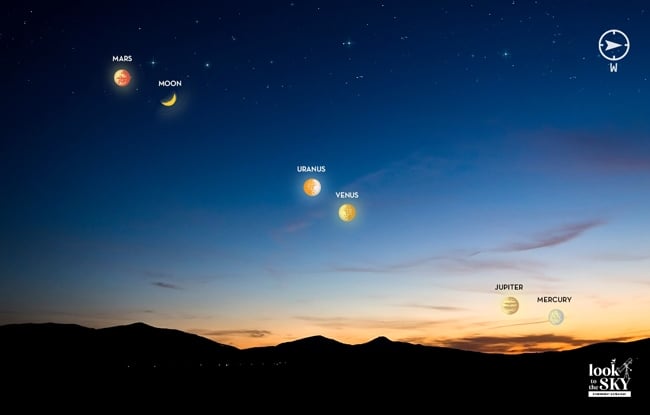
Catch a glimpse of a rare sky event on Monday, March 27, 2023. Use binoculars and look west approximately 20 minutes after sunset to see five planets, the Moon, and a beautiful star cluster known as Messier 35 (M35). Celestial objects will appear in the following order from left to right: M35, Mars, the Moon, Uranus, Venus, Jupiter, and Mercury.
The last time that a similarly compact “parade of planets” graced our skies was when five “naked eye” planets appeared together in the early morning hours of June 2022. However these planetary arrangements are very rare.
Up for the Parade Of Planets challenge?
In the days before March 27, stake out an observing site that has a clear and unobstructed view of the western horizon. Your best option is looking out over a water horizon that is perfectly flat and wide open with nothing to block your view. Another option is a large field with no trees or buildings. A good pair of binoculars will help immensely. (See more about this at the bottom of this page.)
Venus
Dazzling Venus — the brightest planet — is the easiest to spot. No binoculars necessary. Shining like a beacon through the twilight, Venus serves as a guiding light for finding the other planets and celestial objects (to the lower right and upper left — as shown in the image above).
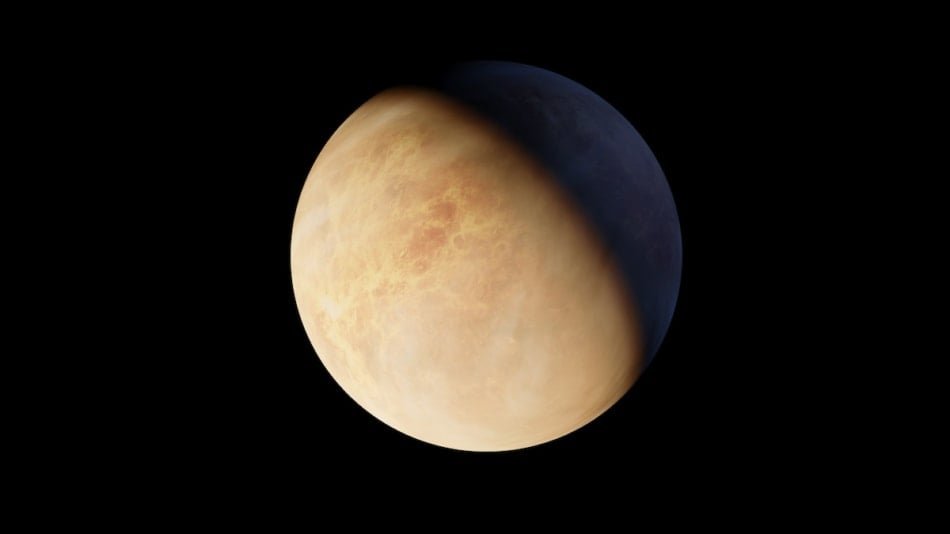
Venus doesn’t set on this night until around 10:15 p.m. local daylight time, so there is ample time to view it. Instead, we draw your attention to Jupiter and Mercury to the lower right. It will be important to catch them as soon as possible, before they disappear over the western horizon (appearing to chase after the Sun).
Jupiter And Mercury
Grab your binoculars. Look to the lower right of Venus, towards the point on the horizon where the Sun has just set. There you will find two bright stars nearly hanging side-by-side. Jupiter (left) will appear to be twice as bright as Mercury (right). They will be separated by approximately 1 degree, the width of one-fingertip of your outstretched arm. Jupiter shines at a magnitude of -2.1 whereas Mercury, magnitude -1.4, is just a bit dimmer than the brightest star in the sky, Sirius.
If you sight them, congratulate yourself. It is no easy feat to catch two planets positioned so close to the setting Sun. Within a day or two, Jupiter will disappear into the glare of the Sun and will no longer be visible in the sky. Mercury, on the other hand, will be moving away from the Sun’s vicinity and will become a bit easier to see during the next couple of weeks.
Uranus
Now that you have seen Jupiter and Mercury, return to Venus as your guide to find Uranus. Barely visible to unaided eye on dark, clear nights, Uranus is now visible roughly 3 degrees to the upper left of the brightest planet (Venus). Again, use your binoculars to scan this region of the sky. What you’ll be looking for is a faint star shining with a pale greenish tint.
Named for the father of Cronus, who was a grandfather of Zeus and great-grandfather of Ares, Uranus lies nearly two billion miles from the Sun, has a diameter of about 32,000 miles and has 27 Moons. There is also a complex of nine narrow, nearly opaque rings which were discovered in 1978.
Uranus likely has a rocky core, surrounded by a liquid mantle of water, methane, and ammonia, encased in an atmosphere of hydrogen and helium. A bizarre feature is how far over Uranus is tipped. Its north pole lies 98 degrees from being directly up and down to its orbit plane. Thus, its seasons are extreme. When the Sun rises at its north pole, it stays up for 42 Earth years. Then it sets and the north pole is in darkness for 42 Earth years.
Mars And the Moon
You can make an instant identification of Mars within this parade of planets by first finding the Moon. On this night, our natural satellite will resemble a fat crescent phase. If you look to the Moon’s upper left, that bright yellow-orange “star” will be Mars.
Four months ago, Mars shone brilliantly because it was relatively close to Earth. On November 30th, it was 50.6 million miles away from us and appeared like a very bright fiery hued star, shining with a steady glow. A week later, like two racing cars going around on a track, we passed Mars in our respective orbits – Earth on the inside and Mars on the outside. And ever since then, we’ve left Mars far behind – in our side view mirror.
In fact, on March 27, 2023, Mars will be 131.4 million miles from Earth – more than two and one half times more distant than it was late last fall. It has correspondingly faded, appearing only 1/13 as bright compared to early in December 2022. Yet, it is still fairly bright compared to most of the other stars in our early spring evening sky.
Star Cluster Messier 35 (M35)
Finally, use the binoculars again, and look just off to the left of Mars and you’ll catch sight of Messier 35 (M35), a star cluster in the constellation of Gemini the Twins. Faint stars form curves and festoons, with a reddish star in the center.
William Lassell, a 19th century English merchant and astronomer called it “a marvelously striking object. No one can see it for the first time without an exclamation.”
Visit NASA.gov to see a high resolution image of M35 and another star cluster.
Choosing Binoculars For Stargazing
The best kind of binoculars for stargazing are 7 x 35 or 7 x 50. The first number refers to magnification — in both cases, “7 power.” The second number refers to the size of the objective lens (the large lens at the front of the binocular measured in millimeters). So, the number 35 refers to an objective lens of 35 millimeters in diameter, or roughly one and one half inches wide. A “50” refers to a 50 millimeter (two inch) wide objective lens. The wider the objective, the more sensitive the binocular will be able to detect fainter objects. It is for this reason, that 7 x 50 binoculars are commonly referred to as “night glasses.”
Of course, there are binoculars that can provide higher magnification and wider objectives, they can prove to be heavier and more difficult to scan for sky objects, without having to mount them on a tripod. But 7 x 35 and 7 x 50 binoculars are lightweight and the best for hand-held use and being able to quickly scan across large sections of the sky. They may even be repurposed for birdwatching during the day. Consider getting yourself a pair if you don’t have some already!
What If I Don’t Have Binoculars?
Don’t fret! You can still experience the grandeur of this rare parade of planets event! Mars, the Moon, Venus will be shining brightly and there is even a chance that you’ll be able to catch Jupiter and Mercury if you are in a location with a western horizon free from obstructions!
Good luck and clear skies!
Join The Discussion!
Are you excited about the Parade of Planets 2023?
Did you see the Parade of Planets in 2022?
Do you own a pair of binoculars for stargazing? If not, are you interested in some?
Let us know and share any photos in the comments below!

Joe Rao
Joe Rao is an esteemed astronomer who writes for Space.com, Sky & Telescope, and Natural History Magazine. Mr. Rao is a regular contributor to the Farmers' Almanacand serves as an associate lecturer for the Hayden Planetarium in New York City.



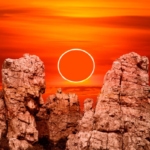
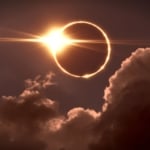
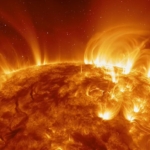
If I could turn back time!
I was out looking for the “Parade” around 9:30pm. Does that mean the planets will not be in a “parade” alignment but rather at various locations of elevation from the horizon. In order to figure out what planets I am seeing is there a way to get a diagram for different times during the evening. Or am I confused about how all this works? I am guessing there is a large learning curve for matters of the night sky. (It is many years – 25 maybe? – since I went out and found the “Big Dipper” +++.).
Weather conditions affecting the view? There is an overcast where I live now/today at 1500. Forecasted to remain cloudy until 2000, then clearing up. Will this impact my view? Thank you so much!
Hi Stephanie! You will want to look as soon after sunset as possible. If you missed it last night (Monday, 3/27) you can try again tonight (Tuesday, 3/28). ? Join our newsletter to get advanced notice of events like these – https://www.farmersalmanac.com/newsletter
Picture shows moon with planets. Says look to the west? Moon rises in east…right. So will planets be aligned with moon or not? I’m all confused ?
Hi Darrell! Being confused is part of the fun. It means you’re learning! The Moon is currently in its “waxing crescent” phase. During this time it travels very close to the Sun. So as the sun sets in the west you will see the Moon nearby. Hope this helps! ⭐
i cant afford a pair of bionoculars were can i get some free ones
Try checking out a pair from your local school or library. You may have to put a deposit down and return them in good shape.
Good day sirs, I have a binoculars 10 x 50 field 6.5, what does that mean? You were recommending for star gazing binoculars 7, the highier the number like 10, the better view you can get?
I can’t seem to be able to keep a pair of good binoculars because there’s always somebody that finds mine and thinks they want them more than I do!! So, yes I am very interested in getting some more and if I do they will be kept under lock and key from now on!
I don’t have a hand help binoculars but would love some to see what is beyond us, all around us and to know there are other planets similar of Earth in some ways, but nothing can come close to our Earth.
Thank you.
Hey, so I live in Spanish fork, Utah. Will I be able to see the parade of planets?
Everyone should be able to try and look for it based on the above hints. You may need binoculars.
Every other site is saying it’s on the 28th, not the 27th. Which one is it?
Hi Misty, Thank you for your question. We recommend March 27th.